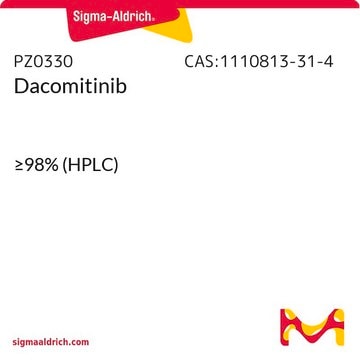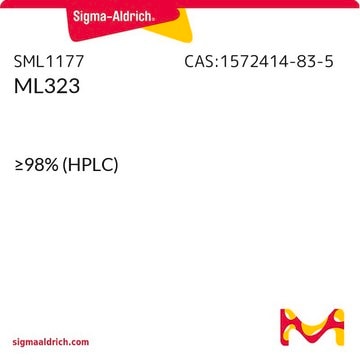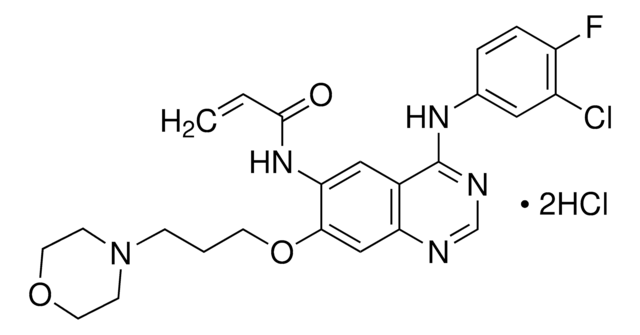Unfortunately, the solution stability of this product is not determined.
SML2156
Erlotinib hydrochloride
≥98% (HPLC)
Sinonimo/i:
774 hydrochloride, CP-358, N-(3-ethynylphenyl)-6,7-bis(2-methoxyethoxy)-4-quinazolinamine hydrochloride, OSI-744 hydrochloride
Scegli un formato
Scegli un formato
About This Item
Prodotti consigliati
Saggio
≥98% (HPLC)
Stato
powder
Condizioni di stoccaggio
desiccated
Colore
white to beige
Solubilità
DMSO: 2 mg/mL, clear (warmed)
Temperatura di conservazione
−20°C
Stringa SMILE
Cl.N(c3cc(ccc3)C#C)c1ncnc2c1cc(c(c2)OCCOC)OCCOC
InChI
1S/C22H23N3O4.ClH/c1-4-16-6-5-7-17(12-16)25-22-18-13-20(28-10-8-26-2)21(29-11-9-27-3)14-19(18)23-15-24-22;/h1,5-7,12-15H,8-11H2,2-3H3,(H,23,24,25);1H
GTTBEUCJPZQMDZ-UHFFFAOYSA-N
Descrizione generale
Applicazioni
Azioni biochim/fisiol
Avvertenze
Warning
Indicazioni di pericolo
Consigli di prudenza
Classi di pericolo
Acute Tox. 4 Oral
Codice della classe di stoccaggio
11 - Combustible Solids
Classe di pericolosità dell'acqua (WGK)
WGK 3
Punto d’infiammabilità (°F)
Not applicable
Punto d’infiammabilità (°C)
Not applicable
Scegli una delle versioni più recenti:
Certificati d'analisi (COA)
Non trovi la versione di tuo interesse?
Se hai bisogno di una versione specifica, puoi cercare il certificato tramite il numero di lotto.
Possiedi già questo prodotto?
I documenti relativi ai prodotti acquistati recentemente sono disponibili nell’Archivio dei documenti.
I clienti hanno visto anche
-
How long is your erlotinib hydrochloride stable as aliquots dissolved in DMSO or water at -20 degrees? And how long is it stable when added to cell culture medium at 37 degrees at 5% CO2?
1 answer-
Helpful?
-
Active Filters
Il team dei nostri ricercatori vanta grande esperienza in tutte le aree della ricerca quali Life Science, scienza dei materiali, sintesi chimica, cromatografia, discipline analitiche, ecc..
Contatta l'Assistenza Tecnica.
















